Suggestions or Feedback?
Whether you’re a prospective student or a tourist visiting the Boston area, we invite you to explore our dynamic campus and experience firsthand how MIT is making a better world .
MIT is located in Cambridge, Massachusetts, across the Charles River from Boston. The main entrance is 77 Massachusetts Avenue.
For maps and questions, stop by the Information Center in Room 7-121, inside the main entrance on the right. Office hours are 9–5, Monday–Friday, excluding legal and Institute holidays .

On This Page
Campus tours and information sessions, getting here and getting around, while you’re here.
MIT's main entrance, 77 Massachusetts Avenue.
MIT Undergraduate Admissions runs information sessions and tours for prospective students Monday through Friday. Campus tours are open to the general public and are led by current students. You can also stroll the campus on your own using our self-guided walking tour.
Prospective undergraduate students
Prospective graduate students usually arrange visits through the department they’re applying to, though MIT Sloan and select departments within the School of Engineering offer tours
General public
Group tours
Self-guided walking tour [link when ready]
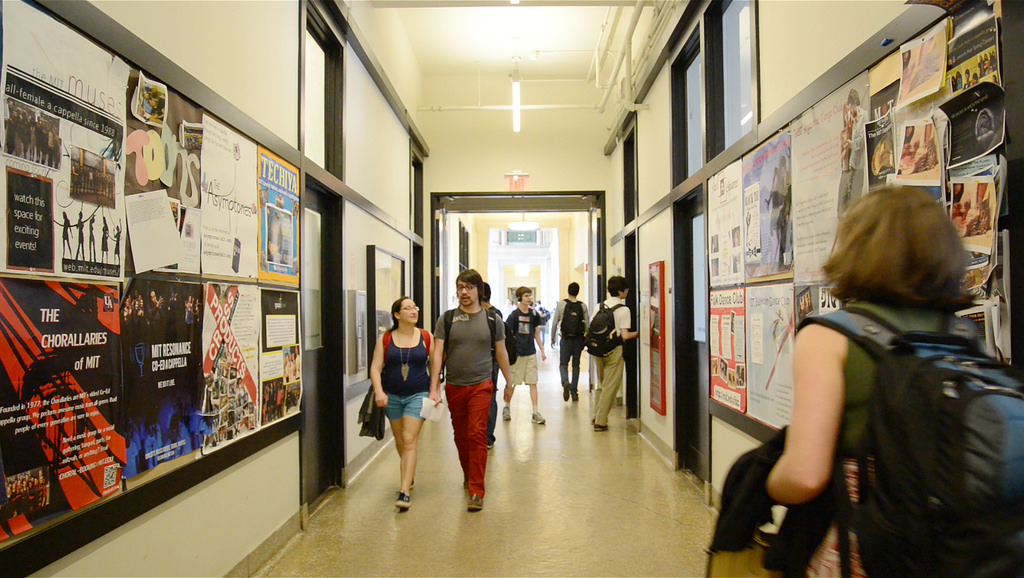
When navigating to campus, use the address for MIT’s main entrance, 77 Massachusetts Avenue, Cambridge . We recommend that you take public transportation or a taxi/rideshare service to campus.
Via public transportation
Boston’s public transportation system is the MBTA , known as “the T.”
Subway : Take the Red Line subway to the Kendall/MIT station or to the Central Square station. Kendall/MIT is the closest stop to the campus; the walk from Central Square takes about 10 minutes.
Bus : The #1 bus stops at MIT on Massachusetts Avenue and provides transportation between Harvard Square and Dudley Square (in Boston). The CT1 bus is similar to the #1 bus but has a shorter route and limited stops; it runs along Mass. Ave. from Central Square to Boston Medical Center.
Shuttle : The EZ Ride shuttle runs to and from Boston’s North Station, with stops at Kendall Square and around MIT’s campus (Note: EZRide is not operated by the MBTA; fare is $2 cash per trip).
From Logan Airport
Taxi or rideshare : Taxi fare from the airport is about $35–$40, and a rideshare service can range from about $20–$35. During non-rush hour, the ride will take about 15 minutes; during rush hour, it may take 30 minutes or more.
Subway : From any terminal at Logan Airport, take the Silver Line bus to South Station. At South Station, change to the Red Line subway to Kendall/MIT (inbound toward Alewife). The ride should take about 30 minutes.
Parking in Cambridge and Boston can be expensive and hard to find. Whenever possible, park your car at your hotel and use public transportation [link to public transportation above] or a taxi/rideshare service. If you must drive to the campus, on- and off-street parking is available for a fee, but most public parking is not very close to the center of campus. More parking information is available from Parkopedia .
- Visiting prospective students may park in designated areas on a first-come, first-served basis.
Other resources
- Accessibility map
- Self-guided walking tour map
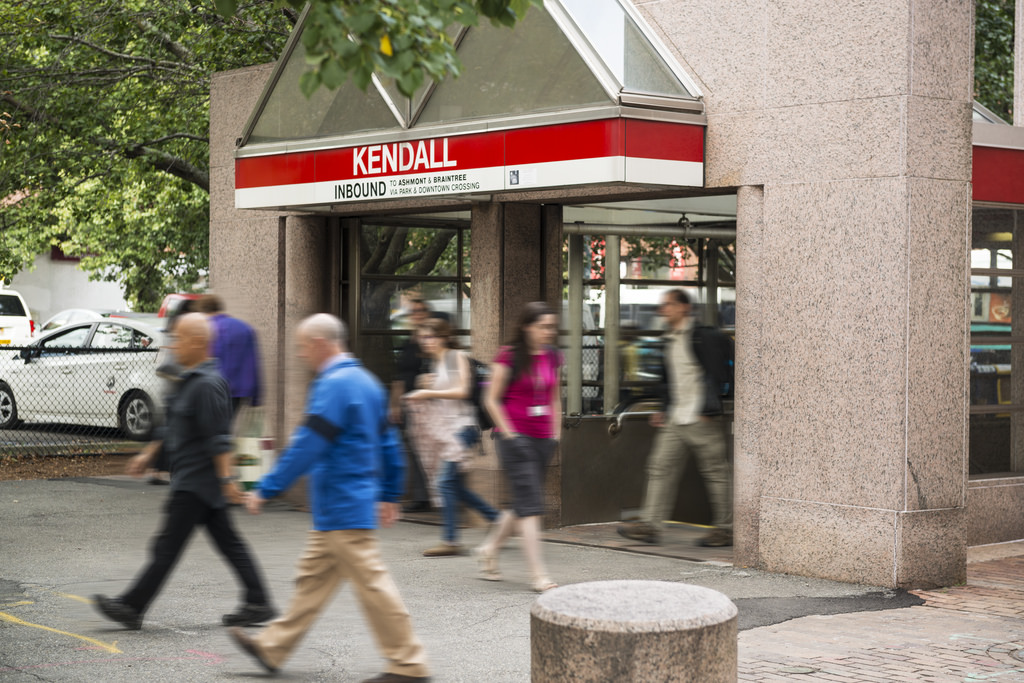
There is plenty to see and do, both on campus and in the greater Boston area.
On the MIT campus
Stop by Killian Court and the Great Dome , one of the most iconic spots on campus.
Take in the galleries and exhibits at the MIT Museum , where art, science, and technology intersect.
Explore public art on campus , including works by Picasso, Calder, and other major artists.
Visit the List Visual Arts Center , MIT’s contemporary arts museum.
Admire students’ creative work at the Wiesner Student Art Gallery .
Browse MIT’s special collections, including historical documents, rare books, and maps, at the Maihaugen Gallery of the MIT Libraries .
Learn about nautical engineering at the Hart Nautical Gallery , which houses one of the most important collections of nautical materials in the country.
Witness the work being done at the cutting edge of cancer research at the Koch Institute Public Galleries .
Delight in a display of hacks on the Charles M. Vest Student Street in the Stata Center .
Shop at the MIT Coop for MIT-branded apparel and other souvenirs.
Around Cambridge and Boston
Trace the footsteps of Boston’s founders on the Freedom Trail .
Quack your way through a duck tour .
Visit Fenway Park , home of the Boston Red Sox.
Learn about the life and presidency of John F. Kennedy at his namesake library.
Appreciate the classics at the Museum of Fine Arts , or get some hands-on learning at the Museum of Science .
Climb to the top of the Bunker Hill Monument for a panoramic view of Boston.
- Where to eat
- Where to stay
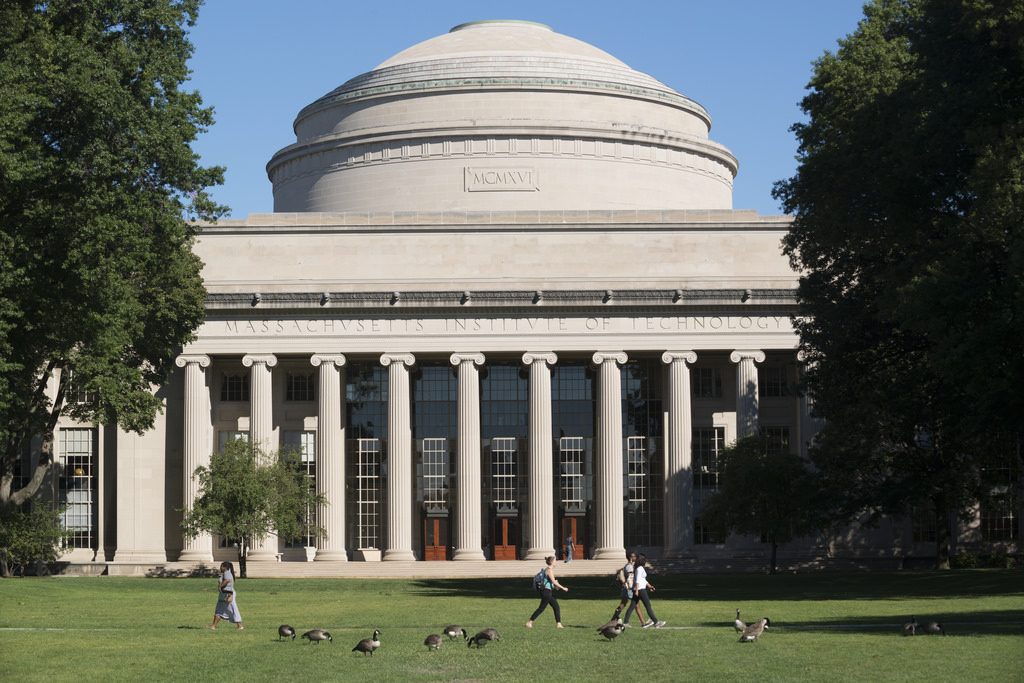
visiting MIT
We’ve heard there is life outside the lab. With its café, bookstores, and student community, Cambridge is often referred to as "Boston's Left Bank." Central Square is known for its international restaurants and music clubs, and Harvard Square for its bookstores and street performers. You'll find award-winning improv comedy in Inman Square . Kendall Square is home to MIT, and is the center of the high tech and biotechnology industries in Massachusetts. In North Cambridge, Porter Square boasts the region's largest concentration of Japanese eateries and shops, and in nearby Somerville, Davis Square hosts a vibrant arts community.
- City of Cambridge Visitor's Guide
- City of Cambridge Tourism Office
- Cambridge Chamber of Commerce
- Harvard Square Business Association
- City of Cambridge Arts Council
Before 1660, a trip to Boston from Cambridge involved a ferry ride and an eight-mile walk. You will find it more convenient to take the T or a cab across the river, or even walk. After all, it's only 364.4 smoots and one ear .
Hide out in the courtyard of the Boston Public Library, or see and be seen on Newbury Street . Take a Duck Tour in the city or a cruise through the Harbor Islands ...Boston and Cambridge have something for everyone.
- The Greater Boston Convention and Visitors Bureau
- Boston City Links
- Time Out Boston
- Arts & Entertainment , from The Boston Globe
- This day in Boston history
- Massachusetts Visitors' Guide
A guided tour of the new MIT Museum
via MIT Technology Review
Feb. 21, 2023
- #artificial intelligence
- #technology
- David Nunez Former Visiting Scientist
- Cynthia Breazeal Professor of Media Arts and Sciences; MIT Dean for Digital Learning
- Rosalind W. Picard Professor of Media Arts and Sciences
- Matthew Groh Former Research Assistant
- Pat Pataranutaporn Research Assistant
- Joy Buolamwini Former Research Assistant
- Media Lab Research Theme: Cultivating Creativity
Share this article
By Kathryn M. O’Neill
When the MIT Museum opened its new 56,000-square-foot space in Kendall Square last October, it was a time of public celebration. It was also a private point of pride for David Nuñez, SM ’15, who helped guide the museum’s transformation as its director of technology and digital strategy.
Nuñez joined the museum in 2017, about a year before the groundbreaking for the new building, and says he had his work cut out for him. “The museum didn’t have a way to sell tickets online. It didn’t have a great online collections search,” he says. “There were a lot of significant ways that I felt the museum could level up.”
Today, it has reimagined the online experience for visitors, who can now browse through more than 156,000 items from the museum’s collection and, yes, buy tickets. It’s also unveiled numerous in-gallery digital activities, ranging from listening to personal reflections on the Black experience at MIT to writing poetry with the help of artificial intelligence.
GlobalLit: a platform for collecting, analyzing, and reacting to children's usage data on tablet computers
Nunez, D. "GlobalLit: a platform for collecting, analyzing, and reacting to children's usage data on tablet computers"

The IRS Should Stop Using Facial Recognition
Taxpayers should be wary of the U.S. government for pushing ID.me’s face-based biometric technology on them.
Bias in facial recognition isn’t hard to discover, but it’s hard to get rid of
Joy Buolamwini talks with Molly Wood about bias research that’s built into artificial intelligence and facial recognition technology.
Dr. Joy Buolamwini featured on Last Week Tonight
The segment highlighted Dr. Buolamwini's work on bias in AI.
MIT Technology Review
- Newsletters
A guided tour of the new MIT Museum
Digital director David Nuñez, SM ’15, offers an insider’s perspective.
- Kathryn M. O’Neill archive page
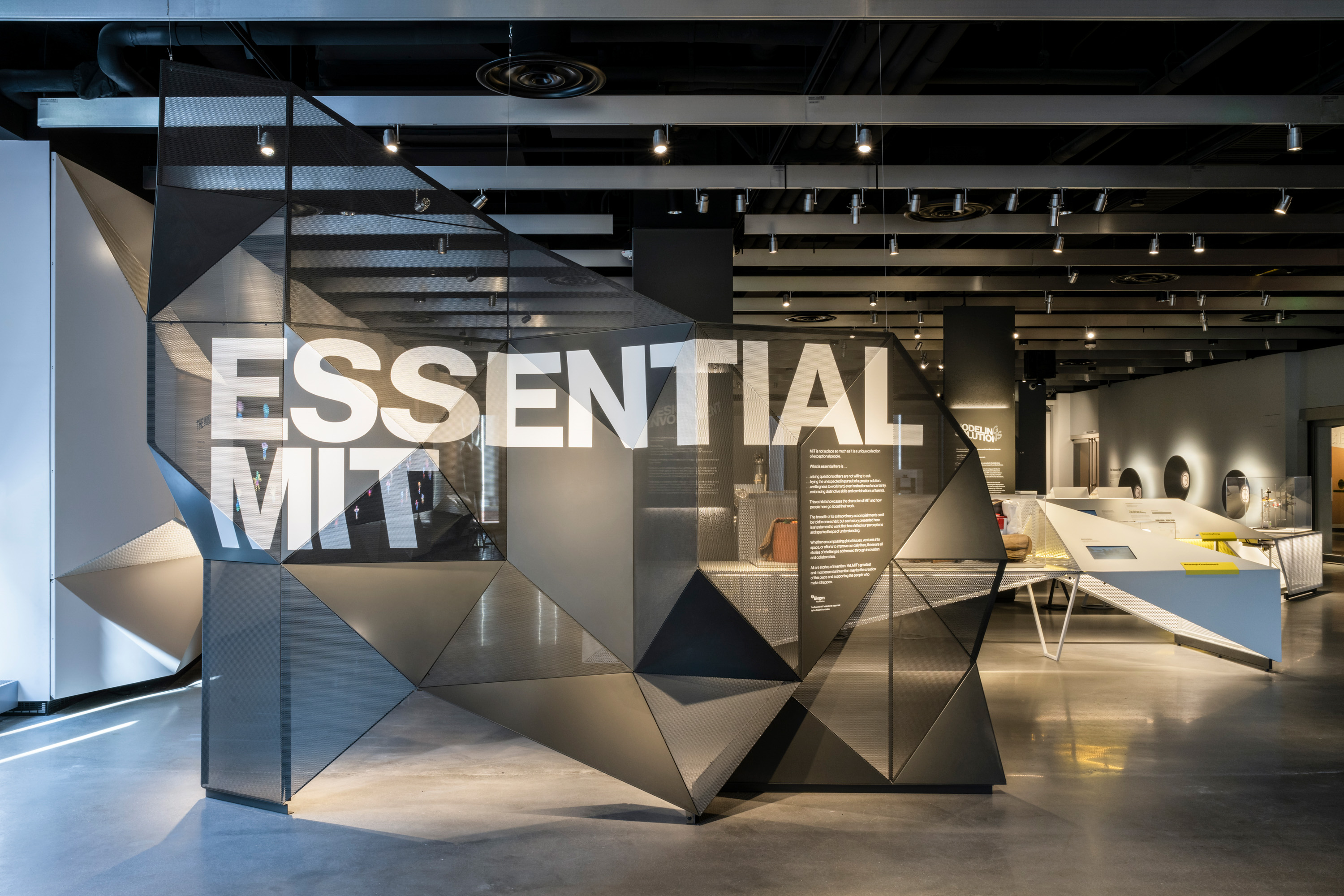
When the MIT Museum opened its new 56,000-square-foot space in Kendall Square last October, it was a time of public celebration. It was also a private point of pride for David Nuñez, SM ’15, who helped guide the museum’s transformation as its director of technology and digital strategy.
Nuñez joined the museum in 2017, about a year before the groundbreaking for the new building, and says he had his work cut out for him. “The museum didn’t have a way to sell tickets online. It didn’t have a great online collections search,” he says. “There were a lot of significant ways that I felt the museum could level up.”
Today, it has reimagined the online experience for visitors, who can now browse through more than 156,000 items from the museum’s collection and, yes, buy tickets. It’s also unveiled numerous in-gallery digital activities, ranging from listening to personal reflections on the Black experience at MIT to writing poetry with the help of artificial intelligence.
“There are over 80 different digital pieces, and many of them are interactive in some way,” Nuñez says. “It was important to us to create a hackable museum you could put your hands into and use.”
Now visitors can not only explore physical artifacts from the Institute’s long history of research and innovation but also gain insight into the MIT community—including generations of MIT alumni—through video and audio recordings featuring Institute innovators. “We want to give people a sense of the human thread through all the technology and invention,” Nuñez says.
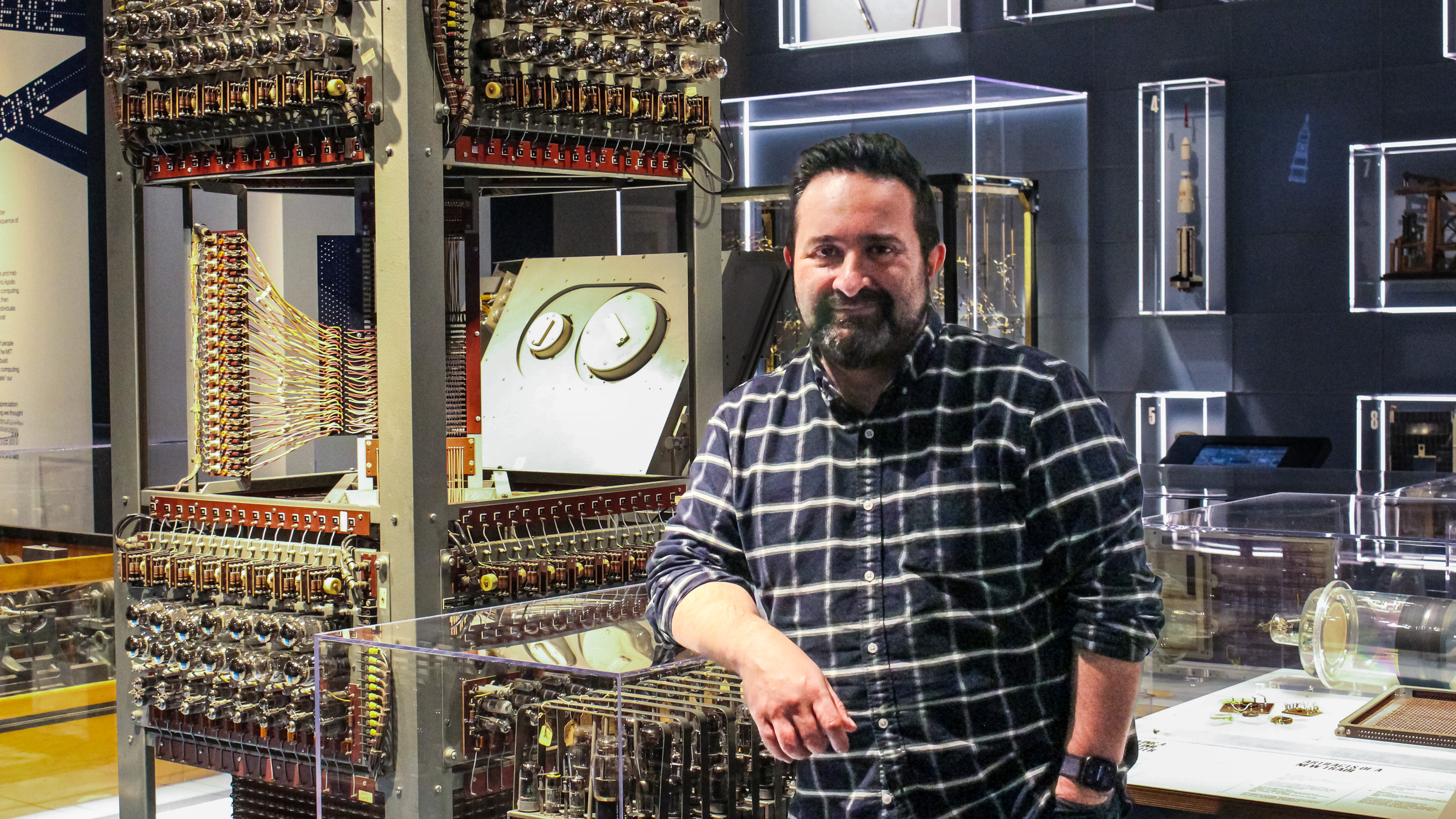
The MIT Museum was founded in 1971 to preserve the Institute’s historical artifacts, and today its mission is to make MIT’s research accessible to everyone; the new digital platforms are therefore designed to enable even more visitors to join in the MIT experience. For example, online visitors can weigh in on questions such as “What does it mean for something to be well-engineered?” And in-person visitors can create personal avatars that appear on the huge media wall on the first floor, in an installation called The Window .
“This is an experience we created as a welcome and an insight into the MIT community,” Nuñez says, explaining that participants answer a few questions, and the generated data determines what each avatar looks like on the big screen. “It’s a representation of you, but in the community of these avatars on the wall. It’s saying you can participate at MIT. Welcome!”
What do many of the exhibits have in common? Alumni, who of course have been creating and shaping the Institute since its earliest days. Here, Nuñez shares his insights on some notable alumni- related exhibits.
Whirlwind computer
One of the world’s first large-scale, high-speed digital computers, MIT’s Whirlwind was created in the early 1950s under the direction of Jay W. Forrester, SM ’45, a professor at MIT Sloan.
Among other Whirlwind-related objects, the museum prominently displays one 4K core memory unit. “It’s a big machine, standing taller than I am,” Nuñez says, yet today’s cell phones typically have roughly a million times more memory. “To stand next to this object is to realize that human hands had to tie all those wires. Humans were involved in all these inventions.”
LIGO prototype
Developed by Professor Emeritus Rainer Weiss ’55, PhD ’62, and his students, this 1970s prototype led to the Laser Interferometer Gravitational-wave Observatory (LIGO), a large-scale physics experiment that was ultimately able to detect the gravitational waves predicted by Einstein’s General Theory of Relativity. The work earned Weiss the 2017 Nobel Prize in physics.
“The experiments that LIGO was able to facilitate feel like magic to me, as a non-physicist,” Nuñez says. “Can you imagine what it was like to be there when they found out it worked? What an amazing moment for humanity!”
One of first social robots designed to simulate social interactions, Kismet was created in the 1990s by Cynthia Breazeal, SM ’93, ScD ’00, who is now MIT’s dean for digital learning and head of the Personal Robots Research Group at the MIT Media Lab. Originally controlled by 15 different computers, Kismet employed 21 motors to create facial expressions and body postures.
“I have a lot of affinity for that particular artifact,” says Nuñez, who studied with Breazeal at the Media Lab. “It’s such a charismatic object; it’s one of the museum’s Instagram moments.”
Developed by Julie Shah ’04, SM ’06, PhD ’11, IRGO is an interactive robot that museum visitors can help to train through artificial-intelligence demonstrations. “Our visitors are participating in real robotics research,” Nuñez says. “That is such a rare and special opportunity.”
Today Shah is the H.N. Slater Professor in Aeronautics and Astronautics at MIT and head of the Interactive Robotics Group within the Computer Science and Artificial Intelligence Laboratory. She shares her thoughts on AI in a nearby audio gallery. Other alumni featured in that gallery include Professor Rosalind Picard, SM ’86, ScD ’91, director of the Media Lab’s Affective Computing Research Group, and Media Lab PhD students Matt Groh, SM ’19, and Pat Pataranutaporn, SM ’20.
“We want to be able to expose the fact that there are communities of people behind everything you’re seeing,” Nuñez says.
Visitors to the AI gallery can see the mask used by Joy Buolamwini, SM ’17, PhD ’22, to present a white face—rather than her own Black one—to facial recognition software, which she found was less accurate for people with dark skin. In her doctoral thesis, Buolamwini coined the term “coded gaze” to describe algorithmic bias.
“You’d assume this gallery would be all about the technology and how it works, but the point here is to get people to think about the social implications of the kind of innovation that’s happening on campus,” Nuñez says. “If our visitors can come away with lots of questions, we’ll have done our job.”
Minecraft Institute of Technology
When MIT students were sent home at the beginning of the covid pandemic in 2020, Jeffery Yu ’22 launched a project to build a replica of MIT in the video-game platform Minecraft, and students collaborated on it from around the world. A video tour of the highly detailed “ Minecraft Institute of Technology ” that resulted is on view at the museum. “They re-created MIT from their lived experience of this special place,” Nuñez says. “It’s such a beautiful representation. You get this sense of whimsy and play—this special MIT feeling comes through.”
Alums can visit the new museum—and bring a guest—for free using the MIT ID for alumni .
Keep Reading
Most popular, large language models can do jaw-dropping things. but nobody knows exactly why..
And that's a problem. Figuring it out is one of the biggest scientific puzzles of our time and a crucial step towards controlling more powerful future models.
- Will Douglas Heaven archive page
How scientists traced a mysterious covid case back to six toilets
When wastewater surveillance turns into a hunt for a single infected individual, the ethics get tricky.
- Cassandra Willyard archive page
The problem with plug-in hybrids? Their drivers.
Plug-in hybrids are often sold as a transition to EVs, but new data from Europe shows we’re still underestimating the emissions they produce.
- Casey Crownhart archive page
It’s time to retire the term “user”
The proliferation of AI means we need a new word.
- Taylor Majewski archive page
Stay connected
Get the latest updates from mit technology review.
Discover special offers, top stories, upcoming events, and more.
Thank you for submitting your email!
It looks like something went wrong.
We’re having trouble saving your preferences. Try refreshing this page and updating them one more time. If you continue to get this message, reach out to us at [email protected] with a list of newsletters you’d like to receive.
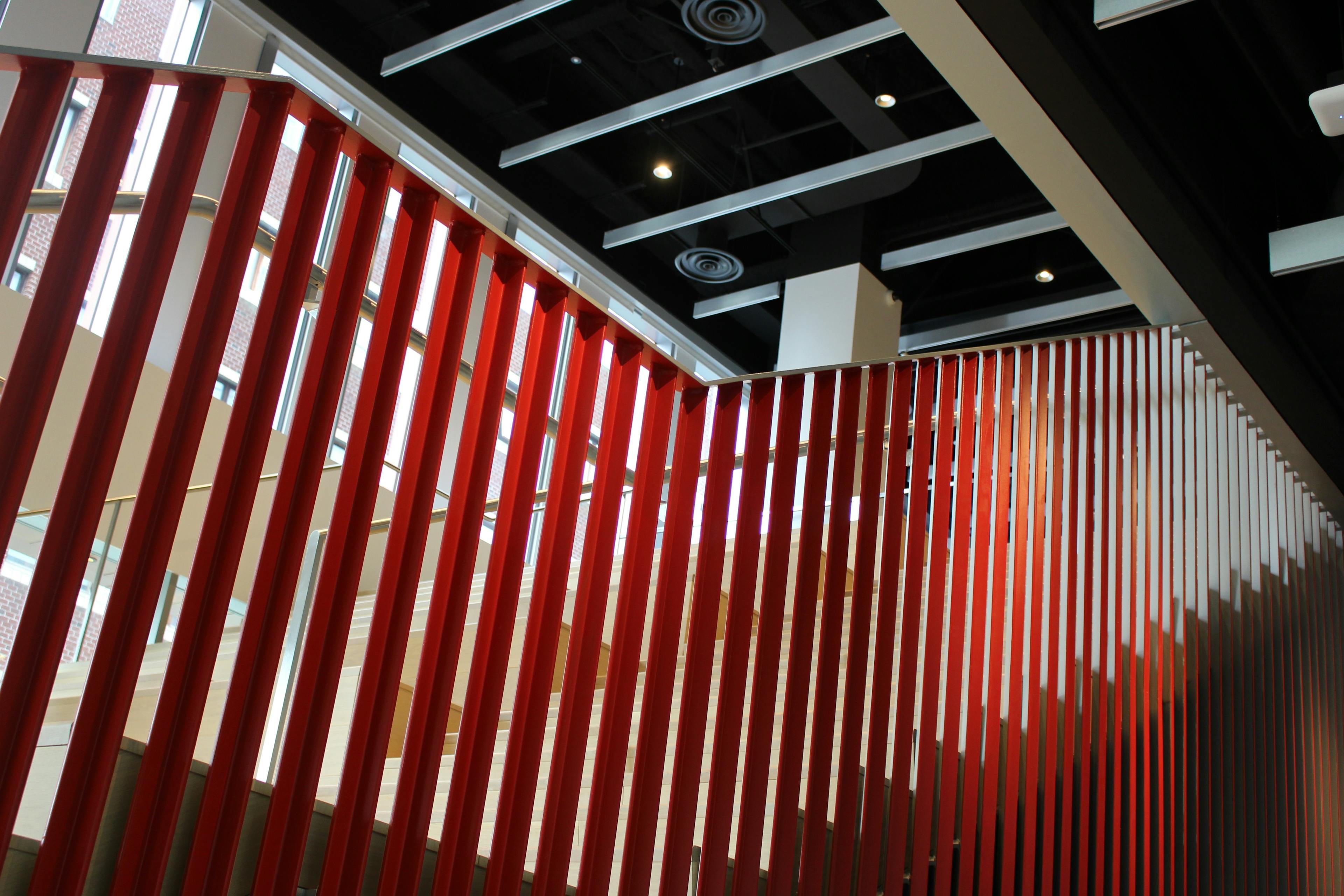
Self-guided Group Visits
Self-guided visits are available for:
Student Groups (Grades 5-12) organized by school or after-school program
Monday - Friday 10:00-3:30 entry, hourly on half-hour $7 per student One adult chaperone for every eight students is required and admitted free. Additional adults pay the Group Adult admission rate ($14)
Youth Groups (Ages 10-18) self-organized or through a tour company Daily 10:00-3:30 entry, hourly on half-hour $8.50 per youth One adult chaperone for every eight youth is required and admitted free. Additional adults pay the Group Adult admission rate ($14)
Adult Groups (ages 19 and up)
Daily 10:00-3:30, hourly on the hour $14 per adult One group leader admitted free. Additional group leaders pay the full Adult General Admission price ($14)
Book your self-guided group visit.
Suggestions or feedback?
MIT News | Massachusetts Institute of Technology
- Machine learning
- Social justice
- Black holes
- Classes and programs
Departments
- Aeronautics and Astronautics
- Brain and Cognitive Sciences
- Architecture
- Political Science
- Mechanical Engineering
Centers, Labs, & Programs
- Abdul Latif Jameel Poverty Action Lab (J-PAL)
- Picower Institute for Learning and Memory
- Lincoln Laboratory
- School of Architecture + Planning
- School of Engineering
- School of Humanities, Arts, and Social Sciences
- Sloan School of Management
- School of Science
- MIT Schwarzman College of Computing
“Whoever you are, this is your place.” Reimagined MIT Museum encourages visitors to join MIT’s community
Press contact :, media download.
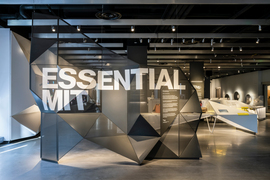
*Terms of Use:
Images for download on the MIT News office website are made available to non-commercial entities, press and the general public under a Creative Commons Attribution Non-Commercial No Derivatives license . You may not alter the images provided, other than to crop them to size. A credit line must be used when reproducing images; if one is not provided below, credit the images to "MIT."
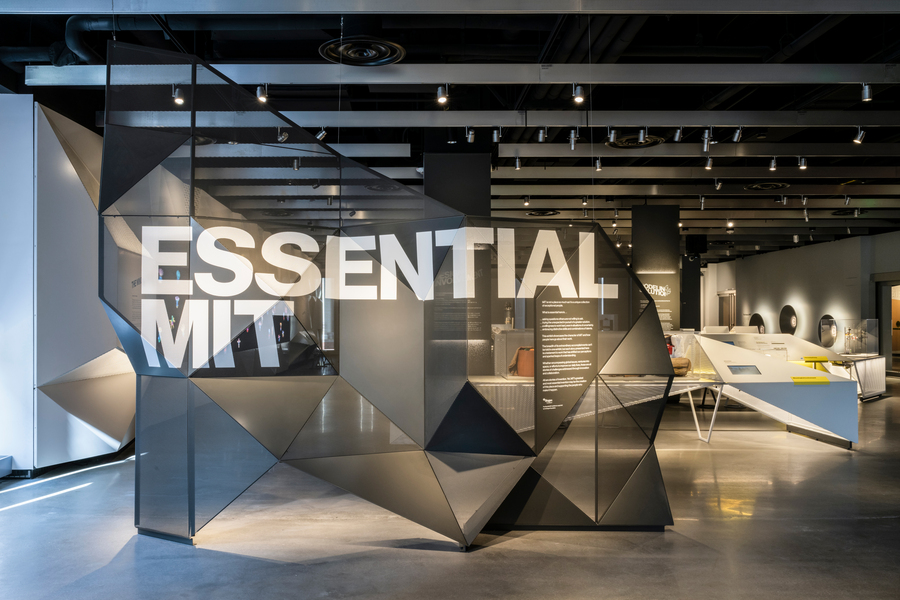
Previous image Next image
MIT’s research and innovation has been described as magic by many. But that magic can sometimes seem obscure and intimidating to outsiders.
Now the MIT Museum, which opens to the public on Oct. 2, is inviting everyone to take part in MIT’s magic with a new 56,000-square-foot space in the heart of Cambridge’s Kendall Square. The reimagined museum invites visitors to explore the Institute’s innovations in science, technology, engineering, arts, and math (STEAM) — and to take part in that work with hands-on learning labs and maker spaces, interactive exhibits, and venues to discuss the impact of science and technology on society.
“We’re taking MIT’s great mission and making it more accessible to the wider community,” MIT Museum Director John Durant says. “What MIT does and stands for is too important to be held within the community of researchers, students, and staff. If MIT is world-changing, then its work needs to be out there in the wider community, and the wider community needs to be able to access and understand it, and to ask questions about how we’re going to apply all this new knowledge and innovation to make the world a better place. The museum is all about turning MIT inside out.”
“The opening of the new MIT Museum is a cause for celebration,” says L. Rafael Reif, MIT’s president. “We are excited to welcome the world in to this brilliantly reimagined space. Museum visitors will get a real sense of the Institute’s spirit of curiosity, boldness, and ingenuity, and will find countless ways to explore and engage with MIT’s remarkable contributions to human progress.”
Praising the efforts of Museum staff and leaders, he adds, “Despite enormous challenges, they came together to build the MIT Museum a beautiful new home.”
The museum’s opening exhibits address big questions in areas like the potential and risks of artificial intelligence — including a deepfake video of President Nixon giving a speech about the failed moon landing — and the moral challenges brought by advances in genetic engineering.
The space also shows art and artefacts from the museum’s collection of over 1 million objects, many for the first time, from Rainer Weiss’s Laser Interferometer Gravitational-wave Observatory (LIGO) prototype to recordings from community members about the Black experience at MIT.
All of the museum’s sections are designed to be surprising and welcoming, but also to provoke conversations about how unfolding innovations should shape the world. To encourage diverse perspectives in those conversations, the museum has taken a number of steps to welcome the public, including offering free general admission to Cambridge residents, promoting free spaces in the museum, hosting open workshops, and more.
“Access is a central piece of this whole endeavor, and it’s a value we’re underscoring to support changing views of who is a scientist, who is an engineer, who gets to know about these issues, and who cares,” MIT Museum Director of Collections Deborah Douglas explains. “These are big questions in our society, and I think we can be a place that feels open and welcome, but also a place for hard and interesting conversations to happen.”
An inspired design
Nestled among the Kendall Square T stop and MIT’s new welcome center, the museum’s glass-walled lobby was built to dissolve the boundaries between Kendall Square and MIT’s campus.
An amphitheater dubbed The Exchange beckons visitors with a massive media wall made to facilitate presentations, discussions, debates, and anything else community members decide to do with it.
“One big theme of the new museum is conversation,” Durant says. “We see the museum serving as a kind of forum or meeting ground for different groups. It’s a place where MIT researchers, staff, and students can meet with entrepreneurs, civic leaders, members of the general public — anybody who has a stake in the future of research and innovation.”
Broad, open staircases take visitors through a journey of galleries that begins on the first floor with a welcome message, leads to second floor research stories from MIT and exhibits addressing technology topics of global importance, and finishes on the third floor with displays from the museum’s collection.
Displayed in the freely accessible lobby is an art piece from the Media Lab’s Poetic Justice Group that celebrates the diverse spoken and sign languages of visitors through a count from 1 to 100, with each number displayed in a different language.
“We’re trying to say, whoever you are, this is your place,” Durant says of the exhibit. “As MIT often says to its incoming students, ‘You belong!’”
The second- and third-floor galleries feature interactive displays that let users manipulate the genomes of virtual mice and work with neural nets that learn how to recognize facial expressions.
“So much of innovation and science research is still about culture, so we tried to balance that and use the museum to display the conversations happening at the intersection of science and culture right now,” Durant says.
On the top floor, objects from the MIT Museum’s collections are arranged by topic areas including computer programming, the role of play and curiosity in discovery, photography, and even a virtual time capsule exploring the community that came together to recreate MIT online during the pandemic.
All of the displays in the collections gallery are designed to change on a regular basis, reflecting the organizing committee’s decision to mold the space around community preferences.
“We hope visitors will see the gallery as a tool as much as a treasure house,” Douglas explains. “We have all these cool things in our collections, and so many different stories we could tell, but we want our visitors to feel empowered to come in and tell entirely different stories than the ones the curators have suggested. We’re like a supermarket that doesn’t tell you what to do with the flour, sugar, and butter.”
Each floor also features spaces that allow visitors to take part in MIT’s research, from its Maker Hub to wet labs and other workshop spaces that will offer daily, drop-in activities. In fact, the new museum has roughly three times more space for face-to-face, hands-on activities than the old museum.
“We aspire to be so much more than a series of exhibition spaces,” says Ann Neuman, director of MIT Museum’s galleries and exhibitions. “In the spirit of MIT’s ‘mind and hand’ experimental sensibilities, we’re a venue for the broader community to participate in science, examine emerging technologies, and engage with ideas that are shaping our world in every way.”
The highly anticipated opening will be celebrated in conjunction with a redesigned Cambridge Science Festival, which is based out of the museum but will extend far beyond its doors, from Oct. 3-9.
“We’re in an ideal location as a gateway between the technology district Kendall Square and MIT,” Durant says. “Our mission is to be an interface institution, so it suits us perfectly to have one foot firmly in MIT and one foot in the wider community.”
A chance to learn
The planning team for the new museum had to overcome challenges related to the Covid-19 pandemic, which not only made the vast majority of their meetings virtual but also forced them to close the doors of the old museum even before they started moving things over to the new location.
With the grand opening, organizers will finally get the chance to get real-time feedback from the community.
“We’re going to learn so much as soon as the doors are open,” Durant says. “I want to see our programs grow and strengthen, our outreach efforts grow and strengthen. From day one we have to be learning and adapting.”
Indeed, the idea of the museum as a living, evolving space was echoed by other members of the museum’s leadership, who described Oct. 2 as the beginning of something rather than an ending.
“My colleagues like to say the museum is a hypothesis, not a well-established theory just yet,” Douglas says. “Science and technology can be intimidating, and our goal is to get people to realize that these are some of the most exciting ways in which human creativity and ingenuity express themselves. It’s improved lives. It’s made this nation and many others great. There have been negative consequences from technology, but it also provides one of our best hopes for the future, and we want everyone to feel a part of that.”
Share this news article on:
Press mentions.
Chronicle visits the new MIT Museum, highlighting a number of exhibits, including one exploring the research behind the hunt for gravitational waves and another that examines the impacts humans are having on the environment. “We try to be a window, going both ways, between MIT and the rest of the public,” explains Prof. John Durant, director of the MIT Museum. “We’re also trying to get people to have a glimpse of how a world-class research institution actually works.”
PBS NewsHour
PBS host Jared Bowen highlights the scientific advancements on display at the MIT Museum. “We’re here to turn MIT inside out,” says Prof. John Durant, director of the MIT Museum . “We want people to understand what contemporary research and innovation are all about and what they mean for everyday life.”
Fast Company
Fast Company reporter Nate Berg spotlights the grand opening of the redesigned MIT Museum. “Braiding the science and the art together, I think it places the science into the context that it is part of our culture and our lives, it’s not a white tower experience,” says Ann Neumann, director of exhibitions and galleries at the museum.
GBH Open Studio reporter Jared Bowen explores the new MIT Museum in Kendall Square. “The reimagined MIT Museum looks at all the advances in technology and their positive – and controversial – effects on society, from genetic engineering to the increasing role that artificial intelligence is playing in art and media,” says Bowen.
The Boston Globe
MIT Museum Director John Durant speaks with Boston Globe reporter Mark Feeney about the significance of the new location of the MIT Museum and what makes the museum such a special place. Of the museum’s new home in the heart of Kendall Square, Durant says, “I think MIT is committing itself here to the importance of its museum as a kind of gateway institution, as a way of helping the wider community understand what MIT is about.”
The new MIT Museum, a “purpose-built exhibition and gathering space in the heart of Kendall Square,” writes Boston Globe reporter Malcom Gay, “seeks to demystify some of the school’s opaque inner workings, makes itself broadly approachable with expanded gallery space, forum areas, learning labs, and a maker hub where visitors can work on museum-led projects.” MIT Museum Director John Durant explains: “We want people to feel that this is their museum.”
The Engine has moved into a new building situated between Kendall and Central Square in Cambridge, reports Jon Chesto for The Boston Globe . “Katie Rae, chief executive and managing partner of The Engine, said having a physical place for startups to work was a crucial part of the original ‘tough tech’ concept,” writes Chesto.
Previous item Next item
Related Links
- Cambridge Science Festival
Related Topics
- History of science
- History of MIT
- Campus buildings and architecture
- Kendall Square
- Technology and society
- Science communications
- Innovation and Entrepreneurship (I&E)
- Cambridge, Boston and region
Related Articles
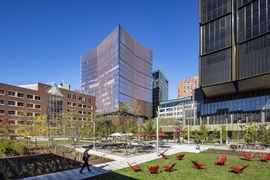
3 Questions: John Durant on the new MIT Museum at Kendall Square
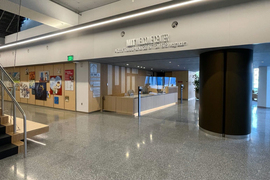
MIT Welcome Center opens in Kendall Square
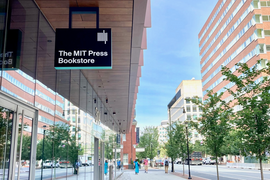
The MIT Press Bookstore reopens in a new location in Kendall Square
More mit news.

Two from MIT awarded 2024 Paul and Daisy Soros Fellowships for New Americans
Read full story →

MIT Emerging Talent opens pathways for underserved global learners

The MIT Edgerton Center’s third annual showcase dazzles onlookers

3 Questions: A shared vocabulary for how infectious diseases spread

Seven from MIT elected to American Academy of Arts and Sciences for 2024

Study demonstrates efficacy of MIT-led Brave Behind Bars program
- More news on MIT News homepage →
Massachusetts Institute of Technology 77 Massachusetts Avenue, Cambridge, MA, USA
- Map (opens in new window)
- Events (opens in new window)
- People (opens in new window)
- Careers (opens in new window)
- Accessibility
- Social Media Hub
- MIT on Facebook
- MIT on YouTube
- MIT on Instagram

Visit the Arts at MIT
You are invited to explore the arts at the Massachusetts Institute of Technology in Cambridge, Massachusetts.
Public Art Collection
A tour of MIT’s public art collection, comprised of 51 works of art and architecture, should be an essential part of anyone’s visit to campus. An interactive map featuring map of the collection can be found on the List Visual Arts Center website .
Art Exhibitions
The MIT Museum and the List Visual Arts Center present exhibitions throughout the year, and there are a number of other exhibition spaces across campus, including the Dean’s Gallery, Keller Gallery, MIT Libraries’ Maihaugen Gallery, Media Lab Galleries, Rotch Library exhibition space, Gallery 9, MIT Museum Studio & Compton Gallery, Hart Nautical Gallery and Koch Institute Public Galleries.
Events and Performances
Arts events including visiting artist lectures, interactive workshops, symposia and performances of dance, music and theater occur frequently on campus and are often open to the public.
Details about current opportunities may be found on the main MIT Events Calendar.
To sign up for email notifications about upcoming opportunities, visit subscribe.
Questions? Contact us at [email protected] or fill out our contact form
Follow us on social media at:.

Interactive Campus Map
Search by school, department, lab or center
Find accessible entrances and ramps
Locate public art work, bike racks or emergency phones
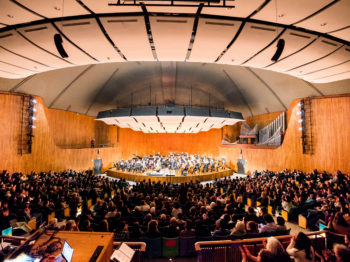
Events Calendar
Discover events open to the public that take place on campus

Exhibitions & Galleries
There are more than 48,000 square feet of exhibition and gallery space on campus.
Explore contemporary art in the Institute’s own art museum, the List Visual Arts Center.
The MIT Museum welcomes visitors to engage with rotating exhibitions on a wide range of STEAM-based topics and to participate in demos, workshops, performances, conversations and debates on the ongoing adventure of research and innovation.
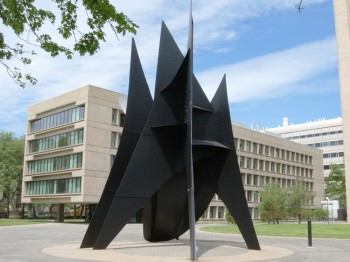
Public Art Collection Map
Use an interactive map of MIT’s public art collection, comprised of 51 works of art and architecture.

Info sessions and campus tours
We offer information sessions and tours every week and an online session once a month! Register for an in-person or online session today.
If you would like to bring a group of 6–50 people to campus, you are welcome to request a group tour .
Self-guided campus walking tour
Chart your own course and follow our tour guides as they share their favorite spots on campus!
Get to know us
Explore mit on your own.

Get the latest
Ask a student.

I went to a motorcycle festival don’t worry, parents, I didn't see other MIT kids there
- by Amber V. '24
- May 23, 2022
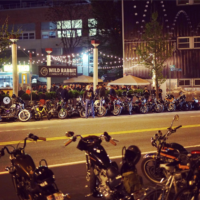
I will, I will set this schedule on fire This has been a long time coming. Text- and picture-heavy! Link- and acronym-happy! Take it…
- by Keri G. '10
- August 10, 2007
- 49 comments
I am a bachelor of science and a master of engineering. In which I make a Voltaire reference and the soup is a metaphor but luckily…
- by Lydia K. '14, MEng '16
- May 21, 2016
Freshman FAQs and a cliffhanger or two.
- by Michael C. '16
- April 7, 2013
Questions? Answers. A valiant attempt at creating an entry that fits as many categories as reasonably possible.
- by Yan Z. '12
- January 1, 2009
- 85 comments


regression and imposter syndrome let's talk about computer science!!
- by Cami M. '23
- March 11, 2021
Tuesday: 12–6 pm Wednesday: 12–7 pm Thursday: 12–7 pm Friday: 12–6 pm Saturday: 12–6 pm Sunday: 12–6 pm
Central Campus: Public Art Tour
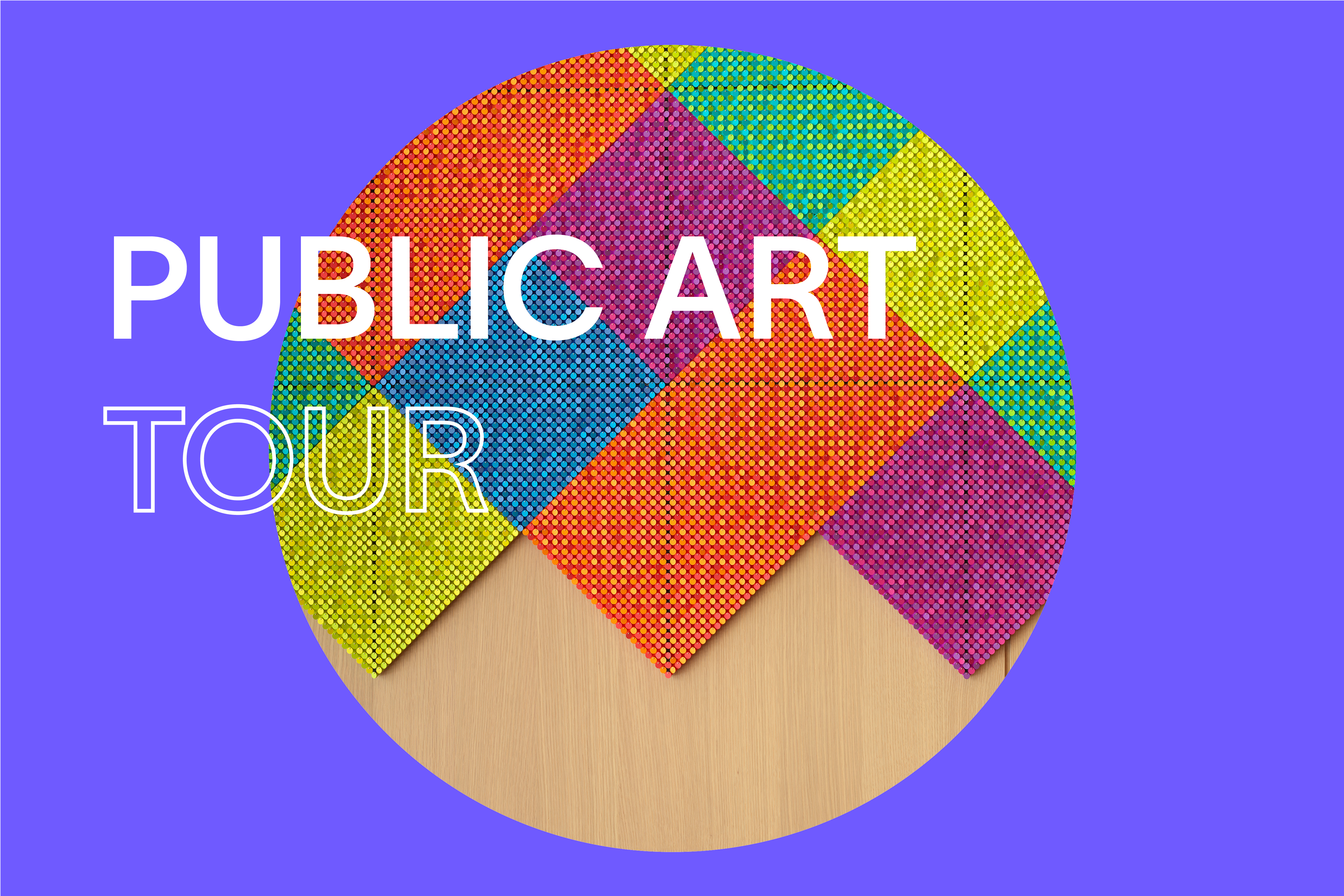
- Add event to Google calendar (Opens in a new window)
- Add event to iCal calendar (Opens in a new window)
- Add event to Yahoo! calendar (Opens in a new window)
- Add event to Outlook.com calendar (Opens in a new window)
- Add event to Office365 calendar (Opens in a new window)
listprograms [at] mit.edu (listprograms[at]mit[dot]edu)
Join MIT List Visual Arts Center on a public art walking tour showcasing the MIT public art collection throughout central campus.
View select artworks in central campus, featuring two new works to the collection by Spencer Finch and Julian Cherrière .
MIT’s Percent-for-Art Program , administered by the List Visual Arts Center, now allocates up to $500,000 to commission art for each new major renovation or campus construction project. The policy was formally instituted in 1968, but earlier collaborations between artists and architects can be found on MIT’s campus. When architect Eero Saarinen designed the MIT Chapel in 1955, sculptor Theodore Roszak designed the Bell Tower and sculptor Harry Bertoia designed the Altarpiece . In 1985, architect I.M. Pei and artists Scott Burton, Kenneth Noland, and Richard Fleischner collaborated on Percent-for-Art projects for the Wiesner Building and plaza, home to the MIT List Visual Arts Center and the Media Laboratory.
This program is free, but registration required.
This program is weather dependent. Registered attendees will receive an email the day before the tour date if needed to cancel due to weather conditions.
- Preplanned tours
- Daytrips out of Moscow
- Themed tours
- Customized tours
- St. Petersburg
Moscow Metro
The Moscow Metro Tour is included in most guided tours’ itineraries. Opened in 1935, under Stalin’s regime, the metro was not only meant to solve transport problems, but also was hailed as “a people’s palace”. Every station you will see during your Moscow metro tour looks like a palace room. There are bright paintings, mosaics, stained glass, bronze statues… Our Moscow metro tour includes the most impressive stations best architects and designers worked at - Ploshchad Revolutsii, Mayakovskaya, Komsomolskaya, Kievskaya, Novoslobodskaya and some others.
What is the kremlin in russia?
The guide will not only help you navigate the metro, but will also provide you with fascinating background tales for the images you see and a history of each station.
And there some stories to be told during the Moscow metro tour! The deepest station - Park Pobedy - is 84 metres under the ground with the world longest escalator of 140 meters. Parts of the so-called Metro-2, a secret strategic system of underground tunnels, was used for its construction.
During the Second World War the metro itself became a strategic asset: it was turned into the city's biggest bomb-shelter and one of the stations even became a library. 217 children were born here in 1941-1942! The metro is the most effective means of transport in the capital.
There are almost 200 stations 196 at the moment and trains run every 90 seconds! The guide of your Moscow metro tour can explain to you how to buy tickets and find your way if you plan to get around by yourself.
Moscow Metro Tour
- Page active

Description
Moscow metro private tours.
- 2-hour tour $87: 10 Must-See Moscow Metro stations with hotel pick-up and drop-off
- 3-hour tour $137: 20 Must-See Moscow Metro stations with Russian lunch in beautifully-decorated Metro Diner + hotel pick-up and drop off.
- Metro pass is included in the price of both tours.
Highlight of Metro Tour
- Visit 10 must-see stations of Moscow metro on 2-hr tour and 20 Metro stations on 3-hr tour, including grand Komsomolskaya station with its distinctive Baroque décor, aristocratic Mayakovskaya station with Soviet mosaics, legendary Revolution Square station with 72 bronze sculptures and more!
- Explore Museum of Moscow Metro and learn a ton of technical and historical facts;
- Listen to the secrets about the Metro-2, a secret line supposedly used by the government and KGB;
- Experience a selection of most striking features of Moscow Metro hidden from most tourists and even locals;
- Discover the underground treasure of Russian Soviet past – from mosaics to bronzes, paintings, marble arches, stained glass and even paleontological elements;
- Learn fun stories and myths about Coffee Ring, Zodiac signs of Moscow Metro and more;
- Admire Soviet-era architecture of pre- and post- World War II perious;
- Enjoy panoramic views of Sparrow Hills from Luzhniki Metro Bridge – MetroMost, the only station of Moscow Metro located over water and the highest station above ground level;
- If lucky, catch a unique «Aquarelle Train» – a wheeled picture gallery, brightly painted with images of peony, chrysanthemums, daisies, sunflowers and each car unit is unique;
- Become an expert at navigating the legendary Moscow Metro system;
- Have fun time with a very friendly local;
- + Atmospheric Metro lunch in Moscow’s the only Metro Diner (included in a 3-hr tour)
Hotel Pick-up
Metro stations:.
Komsomolskaya
Novoslobodskaya
Prospekt Mira
Belorusskaya
Mayakovskaya
Novokuznetskaya
Revolution Square
Sparrow Hills
+ for 3-hour tour
Victory Park
Slavic Boulevard
Vystavochnaya
Dostoevskaya
Elektrozavodskaya
Partizanskaya
Museum of Moscow Metro
- Drop-off at your hotel, Novodevichy Convent, Sparrow Hills or any place you wish
- + Russian lunch in Metro Diner with artistic metro-style interior for 3-hour tour
Fun facts from our Moscow Metro Tours:
From the very first days of its existence, the Moscow Metro was the object of civil defense, used as a bomb shelter, and designed as a defense for a possible attack on the Soviet Union.
At a depth of 50 to 120 meters lies the second, the coded system of Metro-2 of Moscow subway, which is equipped with everything you need, from food storage to the nuclear button.
According to some sources, the total length of Metro-2 reaches over 150 kilometers.
The Museum was opened on Sportivnaya metro station on November 6, 1967. It features the most interesting models of trains and stations.
Coffee Ring
The first scheme of Moscow Metro looked like a bunch of separate lines. Listen to a myth about Joseph Stalin and the main brown line of Moscow Metro.
Zodiac Metro
According to some astrologers, each of the 12 stops of the Moscow Ring Line corresponds to a particular sign of the zodiac and divides the city into astrological sector.
Astrologers believe that being in a particular zadiac sector of Moscow for a long time, you attract certain energy and events into your life.
Paleontological finds
Red marble walls of some of the Metro stations hide in themselves petrified inhabitants of ancient seas. Try and find some!
- Every day each car in Moscow metro passes more than 600 km, which is the distance from Moscow to St. Petersburg.
- Moscow subway system is the 5th in the intensity of use (after the subways of Beijing, Tokyo, Seoul and Shanghai).
- The interval in the movement of trains in rush hour is 90 seconds .
What you get:
- + A friend in Moscow.
- + Private & customized Moscow tour.
- + An exciting pastime, not just boring history lessons.
- + An authentic experience of local life.
- + Flexibility during the walking tour: changes can be made at any time to suit individual preferences.
- + Amazing deals for breakfast, lunch, and dinner in the very best cafes & restaurants. Discounts on weekdays (Mon-Fri).
- + A photo session amongst spectacular Moscow scenery that can be treasured for a lifetime.
- + Good value for souvenirs, taxis, and hotels.
- + Expert advice on what to do, where to go, and how to make the most of your time in Moscow.
Write your review

Turn Your Curiosity Into Discovery
Latest facts.
13 Facts About Brain Tumor Awareness Month US May
13 Facts About Community Garden Week Apr 1st To Apr 7th
40 facts about elektrostal.
Written by Lanette Mayes
Modified & Updated: 02 Mar 2024
Reviewed by Jessica Corbett

Elektrostal is a vibrant city located in the Moscow Oblast region of Russia. With a rich history, stunning architecture, and a thriving community, Elektrostal is a city that has much to offer. Whether you are a history buff, nature enthusiast, or simply curious about different cultures, Elektrostal is sure to captivate you.
This article will provide you with 40 fascinating facts about Elektrostal, giving you a better understanding of why this city is worth exploring. From its origins as an industrial hub to its modern-day charm, we will delve into the various aspects that make Elektrostal a unique and must-visit destination.
So, join us as we uncover the hidden treasures of Elektrostal and discover what makes this city a true gem in the heart of Russia.
Key Takeaways:
- Elektrostal, known as the “Motor City of Russia,” is a vibrant and growing city with a rich industrial history, offering diverse cultural experiences and a strong commitment to environmental sustainability.
- With its convenient location near Moscow, Elektrostal provides a picturesque landscape, vibrant nightlife, and a range of recreational activities, making it an ideal destination for residents and visitors alike.
Known as the “Motor City of Russia.”
Elektrostal, a city located in the Moscow Oblast region of Russia, earned the nickname “Motor City” due to its significant involvement in the automotive industry.
Home to the Elektrostal Metallurgical Plant.
Elektrostal is renowned for its metallurgical plant, which has been producing high-quality steel and alloys since its establishment in 1916.
Boasts a rich industrial heritage.
Elektrostal has a long history of industrial development, contributing to the growth and progress of the region.
Founded in 1916.
The city of Elektrostal was founded in 1916 as a result of the construction of the Elektrostal Metallurgical Plant.
Located approximately 50 kilometers east of Moscow.
Elektrostal is situated in close proximity to the Russian capital, making it easily accessible for both residents and visitors.
Known for its vibrant cultural scene.
Elektrostal is home to several cultural institutions, including museums, theaters, and art galleries that showcase the city’s rich artistic heritage.
A popular destination for nature lovers.
Surrounded by picturesque landscapes and forests, Elektrostal offers ample opportunities for outdoor activities such as hiking, camping, and birdwatching.
Hosts the annual Elektrostal City Day celebrations.
Every year, Elektrostal organizes festive events and activities to celebrate its founding, bringing together residents and visitors in a spirit of unity and joy.
Has a population of approximately 160,000 people.
Elektrostal is home to a diverse and vibrant community of around 160,000 residents, contributing to its dynamic atmosphere.
Boasts excellent education facilities.
The city is known for its well-established educational institutions, providing quality education to students of all ages.
A center for scientific research and innovation.
Elektrostal serves as an important hub for scientific research, particularly in the fields of metallurgy, materials science, and engineering.
Surrounded by picturesque lakes.
The city is blessed with numerous beautiful lakes, offering scenic views and recreational opportunities for locals and visitors alike.
Well-connected transportation system.
Elektrostal benefits from an efficient transportation network, including highways, railways, and public transportation options, ensuring convenient travel within and beyond the city.
Famous for its traditional Russian cuisine.
Food enthusiasts can indulge in authentic Russian dishes at numerous restaurants and cafes scattered throughout Elektrostal.
Home to notable architectural landmarks.
Elektrostal boasts impressive architecture, including the Church of the Transfiguration of the Lord and the Elektrostal Palace of Culture.
Offers a wide range of recreational facilities.
Residents and visitors can enjoy various recreational activities, such as sports complexes, swimming pools, and fitness centers, enhancing the overall quality of life.
Provides a high standard of healthcare.
Elektrostal is equipped with modern medical facilities, ensuring residents have access to quality healthcare services.
Home to the Elektrostal History Museum.
The Elektrostal History Museum showcases the city’s fascinating past through exhibitions and displays.
A hub for sports enthusiasts.
Elektrostal is passionate about sports, with numerous stadiums, arenas, and sports clubs offering opportunities for athletes and spectators.
Celebrates diverse cultural festivals.
Throughout the year, Elektrostal hosts a variety of cultural festivals, celebrating different ethnicities, traditions, and art forms.
Electric power played a significant role in its early development.
Elektrostal owes its name and initial growth to the establishment of electric power stations and the utilization of electricity in the industrial sector.
Boasts a thriving economy.
The city’s strong industrial base, coupled with its strategic location near Moscow, has contributed to Elektrostal’s prosperous economic status.
Houses the Elektrostal Drama Theater.
The Elektrostal Drama Theater is a cultural centerpiece, attracting theater enthusiasts from far and wide.
Popular destination for winter sports.
Elektrostal’s proximity to ski resorts and winter sport facilities makes it a favorite destination for skiing, snowboarding, and other winter activities.
Promotes environmental sustainability.
Elektrostal prioritizes environmental protection and sustainability, implementing initiatives to reduce pollution and preserve natural resources.
Home to renowned educational institutions.
Elektrostal is known for its prestigious schools and universities, offering a wide range of academic programs to students.
Committed to cultural preservation.
The city values its cultural heritage and takes active steps to preserve and promote traditional customs, crafts, and arts.
Hosts an annual International Film Festival.
The Elektrostal International Film Festival attracts filmmakers and cinema enthusiasts from around the world, showcasing a diverse range of films.
Encourages entrepreneurship and innovation.
Elektrostal supports aspiring entrepreneurs and fosters a culture of innovation, providing opportunities for startups and business development.
Offers a range of housing options.
Elektrostal provides diverse housing options, including apartments, houses, and residential complexes, catering to different lifestyles and budgets.
Home to notable sports teams.
Elektrostal is proud of its sports legacy, with several successful sports teams competing at regional and national levels.
Boasts a vibrant nightlife scene.
Residents and visitors can enjoy a lively nightlife in Elektrostal, with numerous bars, clubs, and entertainment venues.
Promotes cultural exchange and international relations.
Elektrostal actively engages in international partnerships, cultural exchanges, and diplomatic collaborations to foster global connections.
Surrounded by beautiful nature reserves.
Nearby nature reserves, such as the Barybino Forest and Luchinskoye Lake, offer opportunities for nature enthusiasts to explore and appreciate the region’s biodiversity.
Commemorates historical events.
The city pays tribute to significant historical events through memorials, monuments, and exhibitions, ensuring the preservation of collective memory.
Promotes sports and youth development.
Elektrostal invests in sports infrastructure and programs to encourage youth participation, health, and physical fitness.
Hosts annual cultural and artistic festivals.
Throughout the year, Elektrostal celebrates its cultural diversity through festivals dedicated to music, dance, art, and theater.
Provides a picturesque landscape for photography enthusiasts.
The city’s scenic beauty, architectural landmarks, and natural surroundings make it a paradise for photographers.
Connects to Moscow via a direct train line.
The convenient train connection between Elektrostal and Moscow makes commuting between the two cities effortless.
A city with a bright future.
Elektrostal continues to grow and develop, aiming to become a model city in terms of infrastructure, sustainability, and quality of life for its residents.
In conclusion, Elektrostal is a fascinating city with a rich history and a vibrant present. From its origins as a center of steel production to its modern-day status as a hub for education and industry, Elektrostal has plenty to offer both residents and visitors. With its beautiful parks, cultural attractions, and proximity to Moscow, there is no shortage of things to see and do in this dynamic city. Whether you’re interested in exploring its historical landmarks, enjoying outdoor activities, or immersing yourself in the local culture, Elektrostal has something for everyone. So, next time you find yourself in the Moscow region, don’t miss the opportunity to discover the hidden gems of Elektrostal.
Q: What is the population of Elektrostal?
A: As of the latest data, the population of Elektrostal is approximately XXXX.
Q: How far is Elektrostal from Moscow?
A: Elektrostal is located approximately XX kilometers away from Moscow.
Q: Are there any famous landmarks in Elektrostal?
A: Yes, Elektrostal is home to several notable landmarks, including XXXX and XXXX.
Q: What industries are prominent in Elektrostal?
A: Elektrostal is known for its steel production industry and is also a center for engineering and manufacturing.
Q: Are there any universities or educational institutions in Elektrostal?
A: Yes, Elektrostal is home to XXXX University and several other educational institutions.
Q: What are some popular outdoor activities in Elektrostal?
A: Elektrostal offers several outdoor activities, such as hiking, cycling, and picnicking in its beautiful parks.
Q: Is Elektrostal well-connected in terms of transportation?
A: Yes, Elektrostal has good transportation links, including trains and buses, making it easily accessible from nearby cities.
Q: Are there any annual events or festivals in Elektrostal?
A: Yes, Elektrostal hosts various events and festivals throughout the year, including XXXX and XXXX.
Was this page helpful?
Our commitment to delivering trustworthy and engaging content is at the heart of what we do. Each fact on our site is contributed by real users like you, bringing a wealth of diverse insights and information. To ensure the highest standards of accuracy and reliability, our dedicated editors meticulously review each submission. This process guarantees that the facts we share are not only fascinating but also credible. Trust in our commitment to quality and authenticity as you explore and learn with us.
Share this Fact:

IMAGES
VIDEO
COMMENTS
Explore the collection. More than one million objects depict the wide interests of the MIT community from its founding in 1861 to today's cutting-edge current research. The museum strives to be a place where science, technology, the humanities, and the arts are all used to frame and reframe problems, enabling it to address the compelling ...
MIT is located in Cambridge, Massachusetts, across the Charles River from Boston, in the vibrant innovation district of Kendall Square. Founded in 1865, MIT established a new kind of independent educational institution relevant to an increasingly industrialized America. Since then, the Institute has built a robust tradition of solving problems in the public interest at the intersection of ...
Gallery Tours; Gallery Tours. ... Free with admission, check our Week-at-a-Glance calendar to see what's happening when you visit. MIT Museum 314 Main Street Gambrill Center Building E-28 Cambridge, MA 02142 (617) 253-5927. Stay in touch. Facebook; Twitter; Instagram; YouTube; Subscribe to our newsletter. Accessibility; Arts@MIT;
Advance appointments are required on weekends when the MIT campus is closed to general access. Please contact our Visitor Experience Team at least 24 hours prior to your intended visit to schedule. MIT Museum 314 Main Street Gambrill Center Building E-28 Cambridge, MA 02142 (617) 253-5927
There is plenty to see and do, both on campus and in the greater Boston area. On the MIT campus. Stop by Killian Court and the Great Dome, one of the most iconic spots on campus.. Take in the galleries and exhibits at the MIT Museum, where art, science, and technology intersect.. Explore public art on campus, including works by Picasso, Calder, and other major artists.
Visit the MIT Museum, the place where science, technology, the humanities, and the arts meet. Discover the history and innovation of Polaroid photography, browse the museum store for unique gifts and apparel, and enjoy the after dark series of events and programs.
Enjoy a 25-minute guided tour of one of our exhibition galleries during your group visit. Groups of ten or more must register two weeks in advance to receive group discount. Guided tours are available for: Student Groups (Grades 5-12) organized by school. Available Mondays (start times 10am, 11:30am, and 1pm), Thursdays and Fridays (start time ...
Maps to lead you on a self-guided tour of the MIT campus are available at the Information Center, room 7-121 (see How to Read an MIT Address). Mobile Tours Download the new MIT Mobile Campus Tour! The MIT Mobile app requires iOS 4.0 or newer or Android OS 2.1 or newer. ... The MIT Museum is located at 265 Massachusetts Avenue, Building N52.
The museum strives to be a place where science, technology, the humanities, and the arts are all used to frame and reframe problems, enabling it to address the compelling questions of our time in new ways. ... MIT Museum 314 Main Street Gambrill Center Building E-28 Cambridge, MA 02142 (617) 253-5927. Stay in touch. Facebook; Twitter; Instagram ...
Workshops are designed for school and after-school groups in grades 5-12, while guided tours are available for groups with participants ages 10 and up. For self-guided visits, pre-registered groups of 10 or more receive a group discount and are subject to group guidelines. To receive group privileges, reservations must be made two weeks in ...
When the MIT Museum opened its new 56,000-square-foot space in Kendall Square last October, it was a time of public celebration. It was also a private point of pride for David Nuñez, SM '15, who helped guide the museum's transformation as its director of technology and digital strategy.
By. Kathryn M. O'Neill. February 21, 2023. MIT Museum. When the MIT Museum opened its new 56,000-square-foot space in Kendall Square last October, it was a time of public celebration. It was ...
If MIT is closed, the Admissions Office is closed and all visit programming is canceled. We will post any closures to mitadmissions.org and notify you of any cancellations by email. If you would like to reschedule your visit, it's easy! Simply fill out a new reservation form. At MIT Admissions, we recruit and enroll a talented and diverse ...
Explore the museum at your leisure. Groups of 10 or more must register one week in advance to receive group discount. ... Youth Groups (Ages 10-18) self-organized or through a tour company Daily 10:00-3:30 entry, hourly on half-hour $8.50 per youth ... MIT Museum 314 Main Street Gambrill Center Building E-28 Cambridge, MA 02142 (617) 253-5927 ...
Chronicle visits the new MIT Museum, highlighting a number of exhibits, including one exploring the research behind the hunt for gravitational waves and another that examines the impacts humans are having on the environment. "We try to be a window, going both ways, between MIT and the rest of the public," explains Prof. John Durant, director of the MIT Museum.
A tour of MIT's public art collection, comprised of 51 works of art and architecture, should be an essential part of anyone's visit to campus. ... The MIT Museum welcomes visitors to engage with rotating exhibitions on a wide range of STEAM-based topics and to participate in demos, workshops, performances, conversations and debates on the ...
The List Visual Arts Center, MIT's contemporary art museum, collects, commissions, and presents rigorous, provocative, and artist-centric projects that engage MIT and the global art community. ... Artist Tour: List Projects 29: Brittni Ann Harvey and Harry Gould Harvey IV Day & Time. May 2, 2024, 5:30 - 6:30PM.
by Matt McGann '00. May 27, 2005. At MIT Admissions, we recruit and enroll a talented and diverse class of undergraduates who will learn to use science, technology, and other areas of scholarship to serve the nation and the world in the 21st century.
Our 7 year old had fun and was fascinated by our visit at the MIT Museum in Cambridge/Boston. It was very interactive and full of surprises, especially with...
Join MIT List Visual Arts Center on a public art walking tour showcasing the MIT public art collection throughout central campus. View select artworks in central campus, featuring two new works to the collection by Spencer Finch and Julian Cherrière.. MIT's Percent-for-Art Program, administered by the List Visual Arts Center, now allocates up to $500,000 to commission art for each new major ...
The Central Airforce Museum in Monino, some 32km from Moscow is extremely popular among aircraft enthusiasts. ... The tour price includes cost of transportation by car. You will be picked up from your hotel and taken back by car. What to see in the museum: ANT-2 - the first all-metal Russian aircraft. On ANT-25 several record-breaking flights ...
The Moscow Metro Tour is included in most guided tours' itineraries. Opened in 1935, under Stalin's regime, the metro was not only meant to solve transport problems, but also was hailed as "a people's palace". Every station you will see during your Moscow metro tour looks like a palace room. There are bright paintings, mosaics ...
Moscow Metro private tours. 2-hour tour $87: 10 Must-See Moscow Metro stations with hotel pick-up and drop-off. 3-hour tour $137: 20 Must-See Moscow Metro stations with Russian lunch in beautifully-decorated Metro Diner + hotel pick-up and drop off. Metro pass is included in the price of both tours.
40 Facts About Elektrostal. Elektrostal is a vibrant city located in the Moscow Oblast region of Russia. With a rich history, stunning architecture, and a thriving community, Elektrostal is a city that has much to offer. Whether you are a history buff, nature enthusiast, or simply curious about different cultures, Elektrostal is sure to ...